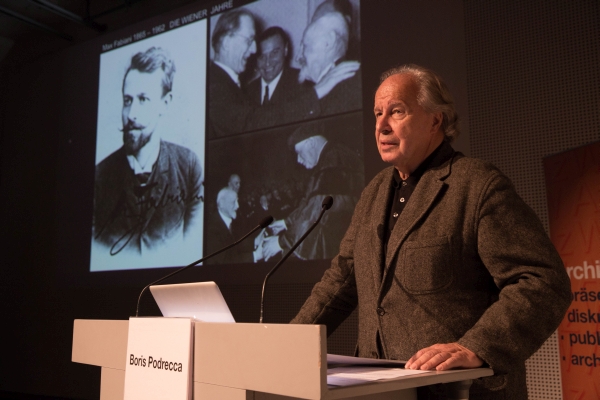Max Fabiani, the Architect of the Monarchy
The Opening Lecture of the AZ W Exhibition
Text: Boris Podrecca

Every work by Fabiani shares a kind of provoking globally approached concept or idea which may seen as a correspondent of a congenial decision made by the municipal management. He did not change his style or pose for a Biedermeier manner even when reaching his late period and the recession. For him building and construction have always been festivities – events to be celebrated, which could be implemented off-hand – in contrast with Plečnik –, on condition that even his more modest or minor works also echo the grand principles of architecture. When in 1952, at the age of 87 he was awarded the honorary doctorate of the Vienna-based Technische Hochschule he spent a few days in the city where he had lived for almost five decades as one of the most renowned and yet most difficult architect. Then he surprised Körner, the head of state then by sketching a highly progressive programme of the alpine country during a conversation with him: he worked out this in details in 1958 in writing. According to this concept, Vienna would be planned and developed to follow the examples of minor towns, to use a transparent grid of parallel streets, ring roads and load-bearing squares. He advised against the German model, and preferred the vernacular saying that the freedom of forms must be the foundation to rely upon, arguing that decoration is also important, and oddity and joking can easily and peaqcefully coexist alongside with fine arts.




